World Heritage Day 2025 — Intangible Cultural Heritage Entities In India
World Heritage Day 2025: World Heritage Day, observed on April 18, celebrates the diverse cultural wealth of the world. The Intangible cultural heritage of India is a living tradition that shapes the soul of its people. In contrast to monuments and architectural marvels, these cultural entities are expressed through oral traditions, performing arts, festivals, rituals, traditional knowledge, and craftsmanship.
India is an incredibly diverse country that is home to several intangible cultural heritage elements recognised by UNESCO, including Yoga, Vedic chanting, Kumbh Mela, and classical dance forms. These traditions not only reflect the rich cultural identity of India, but they also promote a sense of belongingness within communities. On this special day, let's honour the precious forms of these cultural expressions. These contribute to keep India's legacy vibrant, alive, and meaningful for the future generations.
ALSO READ: On World Heritage Day, Bhagavad Gita And Natyashastra Get UNESCO Honour
Traditional Handicrafts
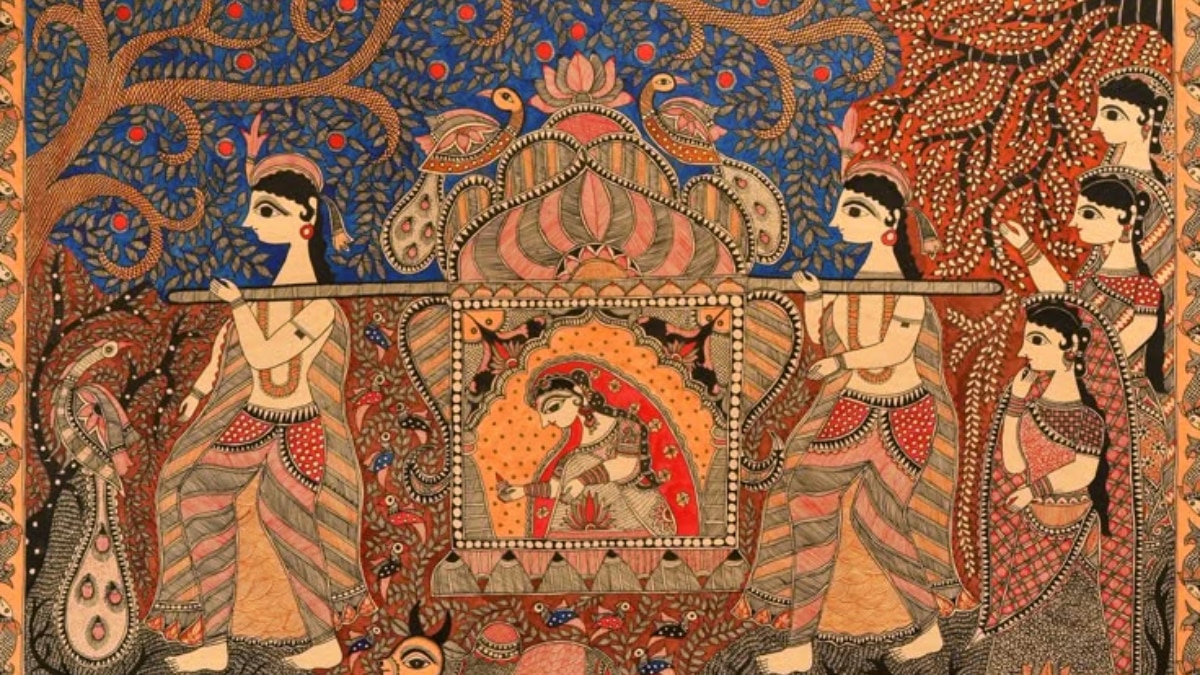 (Image Source: Pinterest/exoticind)
(Image Source: Pinterest/exoticind)
Traditional Indian handicrafts are a vibrant reflection of the country's rich cultural diversity and artistic excellence. These handicrafts are not merely decorative items, but also represent the local heritage, livelihoods, and century-old skills. From intricate embroidery to delicate ceramics, every part of India offers unique forms of craftsmanship that's related to religious rituals, festivals, and everyday life. Artisans use natural elements such as wood, clay, metal, textiles, and more. They use eco-friendly methods and indigenous designs, making everything special and unique.
- Chikankari Embroidery: Chikankari embroidery is a delicate hand embroidery style of Lucknow. It consists of hand stitching on light fabrics like cotton, muslin, georgette etc. This embroidery style uses a white thread to create floral, paisley, and nature inspired patterns with stitches like bakhiya, phanda, and murri.
- Wood Carvings: Wood Carving is famously practiced in Saharanpur. This city in Uttar Pradesh is also known as "Wooden City." Artisans use sheesham wood to create furniture, decorative items, and traditional crafts. They practice a perforated lacy work which makes them unique.
- Madhubani Painting: Madhubani Painting an art form of Bihar that's also known as Mithila Art. It's one of the oldest art forms of India and is known for its mythological themes.
- Jaipur Blue Pottery: This pottery is not made of clay, but a mixture of quartz stone powder, powdered glass, Multani mitti, and gum. It's famous for its eye catching blue hues, glaze and floral patterns.
- Bidriware: Birdriware is a metal handicraft technique that's practiced in Bidar, Karnataka. It involves creating items like plates, vases, jewelleries, and more using special alloy of zinc, copper, etc. It's known for the silver inlay on alloyed metal and symbolic motifs.
- Terracotta: Terracotta translates to "baked earth." It's practiced in many regions of India including West Bengal, Rajasthan, Tamil Nadu, and more. It's an integral part of Indian art which includes depictions of gods, goddesses, animals, and humans. This art form has been known to have it's roots in the Indus valley Civilisation.
- Bamboo Weaving: Bamboo weaving is an ancient craft of Northeast India. It includes skilled weaving to make items like baskets, mats, hats, and household utensils using bamboo strips, leaves, and other natural fibers.
Culinary Practices
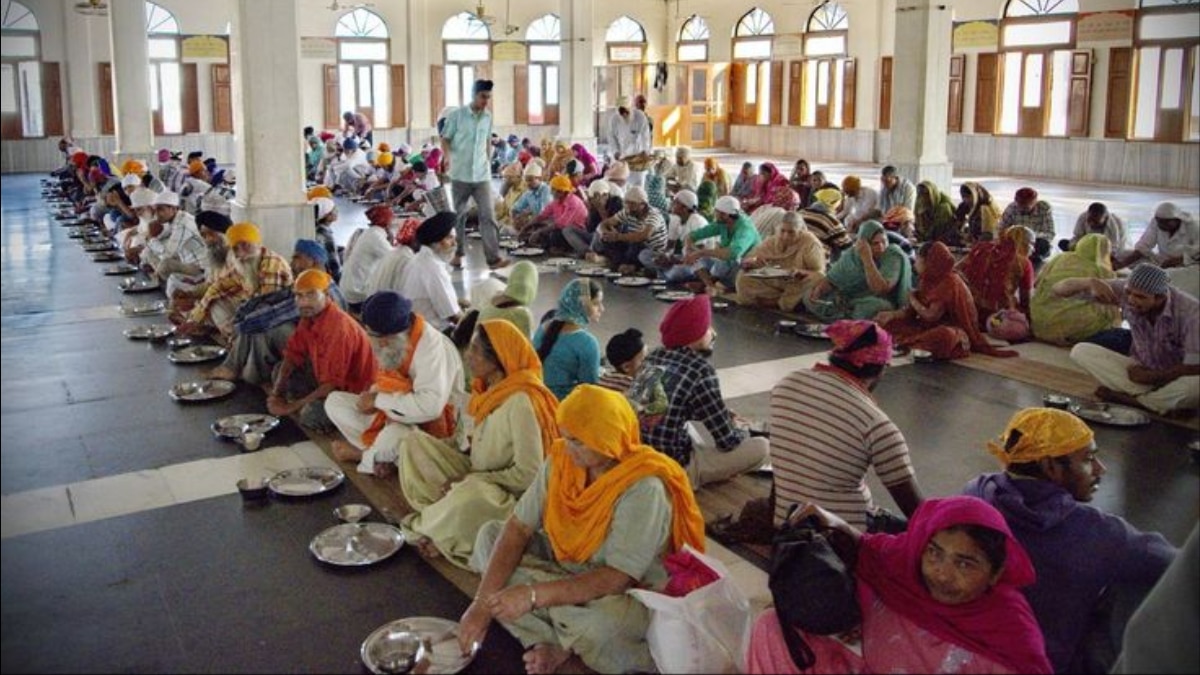 (Image Source: Pinterest/kamarjeetsingh3)
(Image Source: Pinterest/kamarjeetsingh3)
Indian culinary practices are extremely diverse and rich, just like the country's cultural landscape. The country's traditional food are deeply intertwined with the local customs, climate, availability, festivals, and religions. It creates a tapestry of different flavours and cooking techniques of each region. Indian cuisine if famous worldwide for its aromatic and rich spices, cooking methods, and a balance of flavours. It's influenced by Ayurveda, which is a traditional system of medicine that promotes balance in body through food.
- Regional Cuisine: Every state of Indian offers a unique gastronomic experience that differs in taste, texture, cooking technique, ingredients, and more. From aromatic Kashmiri Wazwan, to royal Rajasthani Thali, coastal Goan Fish Curry, and flavourful Panch Phoron in Bengali cuisine, every region preserves its own culinary heritage.
- Langar: Langar is a Sikh tradition that's followed in Gurudwaras. Here, free meals are served, which showcase equality, humility, and selfless service.
- Fermented Foods: Fermented foods are an integral part of Indian cuisine. Each region offers its unique dish that's made using naturally fermented batters. Idli and Dosa from South India, Dhokla from Gujarat, and Pakhala Bhata from Odisha are a few examples. These cuisines are known to aid digestion, enhance gut health, and improve nutrient absorption.
- Ayurvedic Cooking: Ayurvedic cooking focuses on balance, wellness, and harmony with nature. It emphasises on natural and locally sourced ingredients. The foods in this traditional Indian technique are based on the individual's dosha, that's the body constitution of Vata, Pitta, and Kapha.
- Temple Prasad: Temple Prasad: Sacred offerings like the Tirupati Laddoos of Tirumala Venkateswara Temple, Mahaprasad of Jagannath Temple, Panchamritham of Palani Dhandayuthapani Swamy Temple and Kada Prasad of Golden Temple are some examples that show the rich culinary heritage of India.
- Use Of Spices: Spices are known to be the soul of Indian cooking. They bring depth, aroma, and taste of every dish. Spices are not only used to enhance the flavour, but are also valued for their medicinal properties. They are blended into regional masalas like garam masala, sambar masala, and panch phoran to suit the regional taste. The art of tempering or tadka is also a unique skill that's practiced all over the country.
Spiritual And Healing Practices
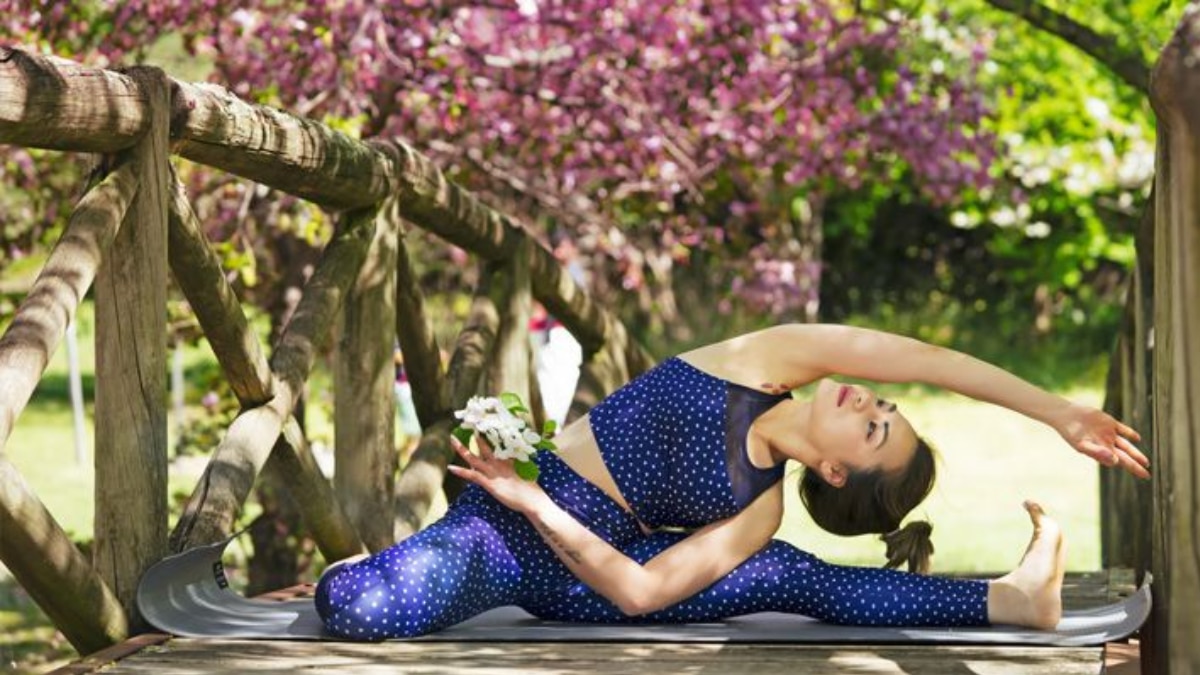 (Image Source: Pinterest/youaligned)
(Image Source: Pinterest/youaligned)
India has been recognised for its spiritual and traditional healing practices worldwide. These practices are deeply rooted in ancient scriptures, rituals, and philosophies that keep the body, mind, and soul healthy.
- Yoga: Yoga is one of the most famous spiritual practices of India. It's a spiritual path as well as a holistic healing system. This practice encourages self-awareness, inner peace, and connection with the divine. It's known to have a lot of therapeutic benefits. Yoga is also recognised by UNESCO as an intangible cultural heritage of India.
- Ayurveda: Ayurveda is the science of life. It's one of the oldest natural healing techniques followed in India. Ayurveda is rooted in Vedic tradition and promotes healing through herbal medicines, diet, yoga, meditation, massage, and purification therapies.
- Vedic Chanting: Vedic chanting originated from the Vedas and are recited in Sanskrit using rhythms, pronunciations, and intonations. Each chant is believed to have vibrational energy that influences the mind and environment. It helps in improving focus, promoting mental clarity, calming the nervous system, and more. Vedic chanting has also been recognised by UNESCO as India's intangible cultural heritage.
Music And Dance Forms
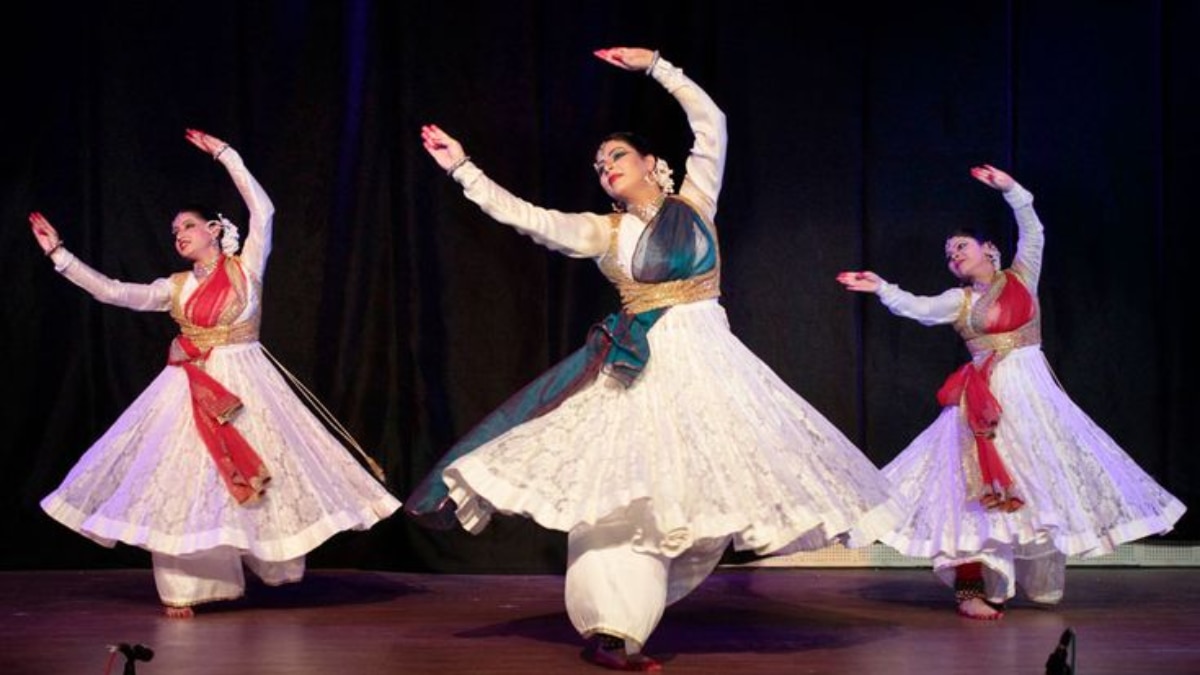 (Image Source: Pinterest/nishka1912)
(Image Source: Pinterest/nishka1912)
India's music and dance forms are divided into classical and folk. Each region offers their own expressions of rhythm, melody, and storytelling. These art forms play a huge role in spiritual and social life.
- Classical Dance Forms: India is home to 8 classical dance forms that are based on Natya Shastra. These forms include Bharatanatyam from Tamil Nadu, Kathak from Uttar Pradesh, Kathakali and Mohiniyattam from Kerala, Kuchipudi from Andhra Pradesh, Manipuri from Manipur, Odissi from Odisha, and Sattriya from Assam. These dance forms focus on expressive facial gestures, elaborate costumes, and graceful movements. The artists portray stories from epics like the Mahabharat and the Ramayan.
- Folk And Regional Dance Forms: Folk and regional dance forms are vibrant expressions of the country's diverse cultures that celebrate local traditions, festivities, and agricultural cycles. Each state has a unique style and reflects the community's way of spiritual belief. Garba from Gujarat, Bhangra from Punjab, Bihu from Assam, Cholia Dance from Uttarakhand, Ghoomar from Rajasthan, and Lavani from Maharashtra are some examples of the vibrant folk dances of India.
- Carnatic Music: Carnatic music originated from South India and is popular for its spiritual themes, melodies, and rhythmic patterns. Instruments are veena, mridangam, flute, and violin are commonly used in it. This style of music is based on ragas and talas.
- Hindustani Music: Hindustani is another major tradition of Indian classical music. It's inspired from devotional songs and philosophical teachings. The instruments used in it include sitar, sarod, tabla, etc. It has been originated from North India and in renowned for its emotional depth, complexity, and improvisation.
Festivals And Rituals
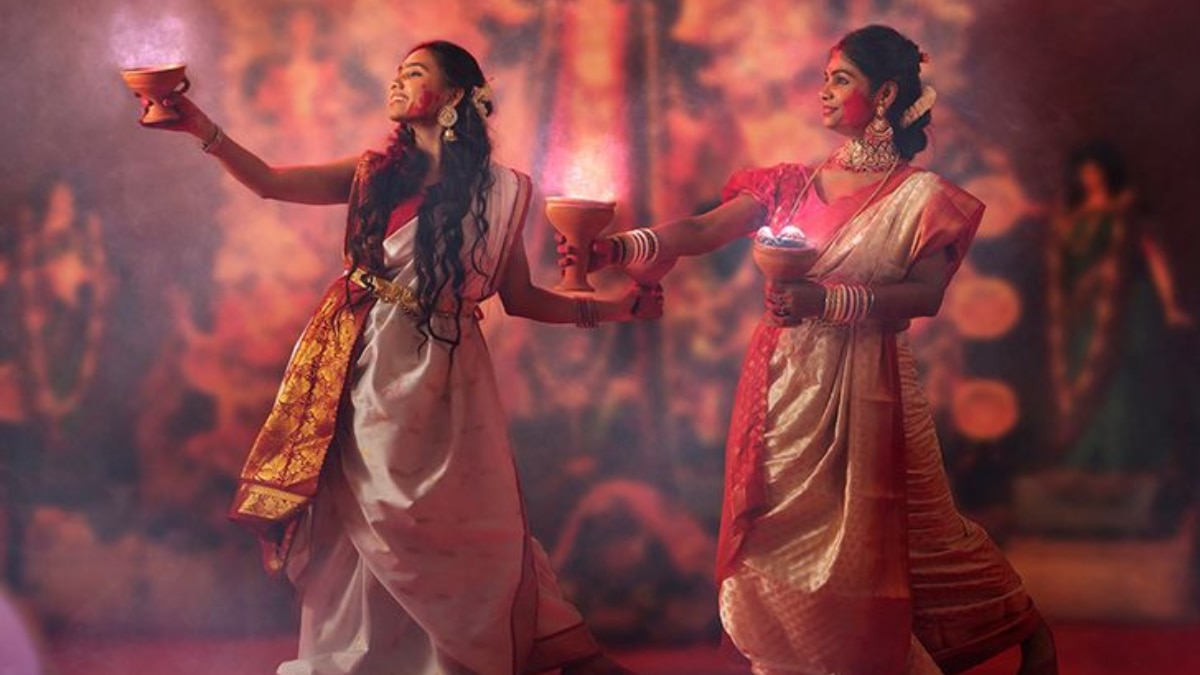 (Image Source: Pinterest/rajbhogfoodsinc)
(Image Source: Pinterest/rajbhogfoodsinc)
Indian festivals and rituals are an integral part of India's intangible cultural heritage. They are deeply rooted in religious, seasonal, and agricultural traditions. These festivals and rituals showcase the country's diverse beliefs, customs, traditions, and practices.
- Kumbh Mela: Kumbh Mela is one of the largest spiritual gatherings in the world. It's held every 1 years at four holy places - Prayagraj, Haridwar, Ujjain, and Nasik which are located along the banks of rivers like Ganga, Yamuna, Shipra, and Godavari. During this time, people bath in the holy waters and believe that it cleanses one's sins and purify the soul.
- Durga Puja: Durga Puja is celebrated widely all over India, especially in West Bengal. The sacred festivals honours Goddess Durga who defeated demon Mahishasura. Devotees gather together for installation of idols, prayers, offerings, and cultural events. They engage in performances like dhunuchi dance, sindoor khela, and more.
- Onam: Onam is the harvest festival of Kerala which also marks the homecoming of the mythical King Mahabali. People engage in traditions like Pookalam, Onam Sadya, Vallam Kali, and traditional dance and music. UNESCO has listed Onam in the UNESCO Representative List of Intangible Cultural Heritage.
- Uttarayani: Uttarayani is one of the most significant festivals of Uttarakhand. It's associated with the harvest season and is celebrated with great enthusiasm in Kumaon and Garhwal regions. People visit the sacred temples, enjoy fairs, and traditional local delicacies on this day. They also gather around the bonfire and engage in folk dances.
Oral Traditions And Storytelling
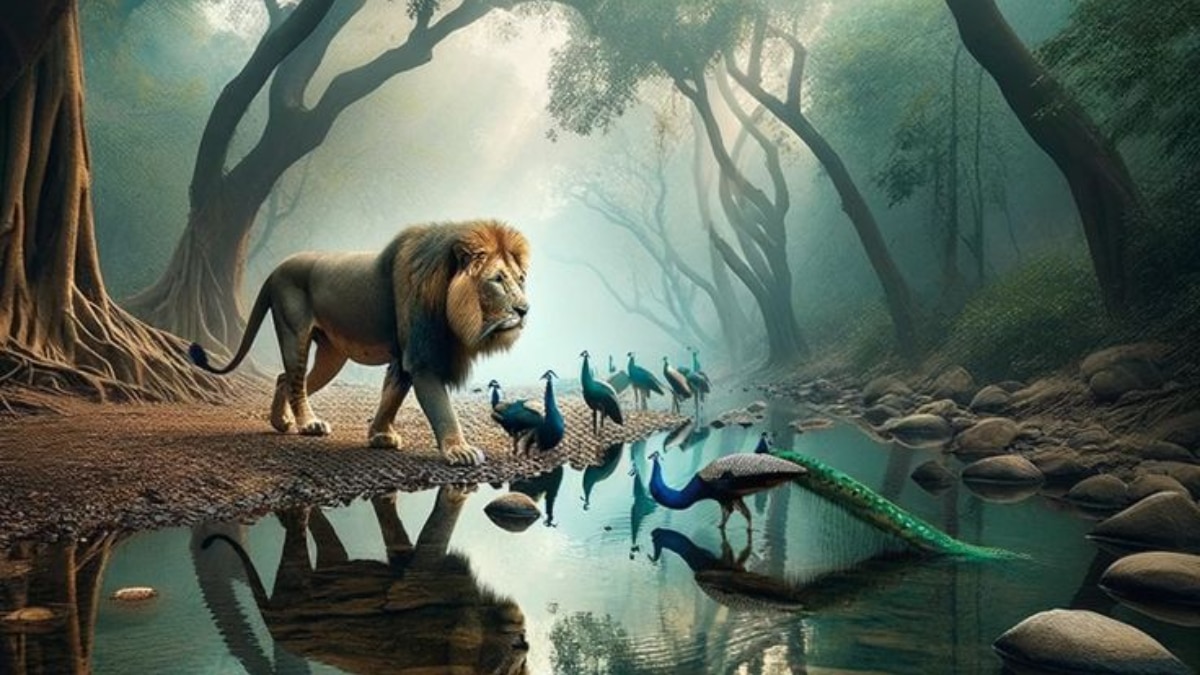 (Image Source: Pinterest/chandrapcs)
(Image Source: Pinterest/chandrapcs)
Oral traditions and storytelling are central to India's cultural identity. They preserve the country's history, mythology, values, and community life. These stories are not only for entertainment, but also have moral lessons, social norms, and wisdom associated with them.
- Jataka Tales: These are a part of Buddhist tradition and showcase virtues, moral teachings, and wisdom. Jataka Tales have been told in various languages all across the country. Each tale ends with a moral lesson that emphasises kindness, selflessness, and compassion, which are all values central to Buddhist philosophy.
- Panchatantra: Panchatantra are known to be written around 2,000 years ago by Vishnu Sharma. These tales primarily use animal characters that impart wisdom on things like morality, friendship, and more. The tales use an engaging style and humorous dialogues that make them easy and fun.
- Baul Songs: Baul Songs are an integral part of the Bengali tradition. These songs consist of instruments like ektara, dholak, and bansuri. The songs have the theme of divine love, self realisation, and unity of the human soul with the divine.
lifestyle